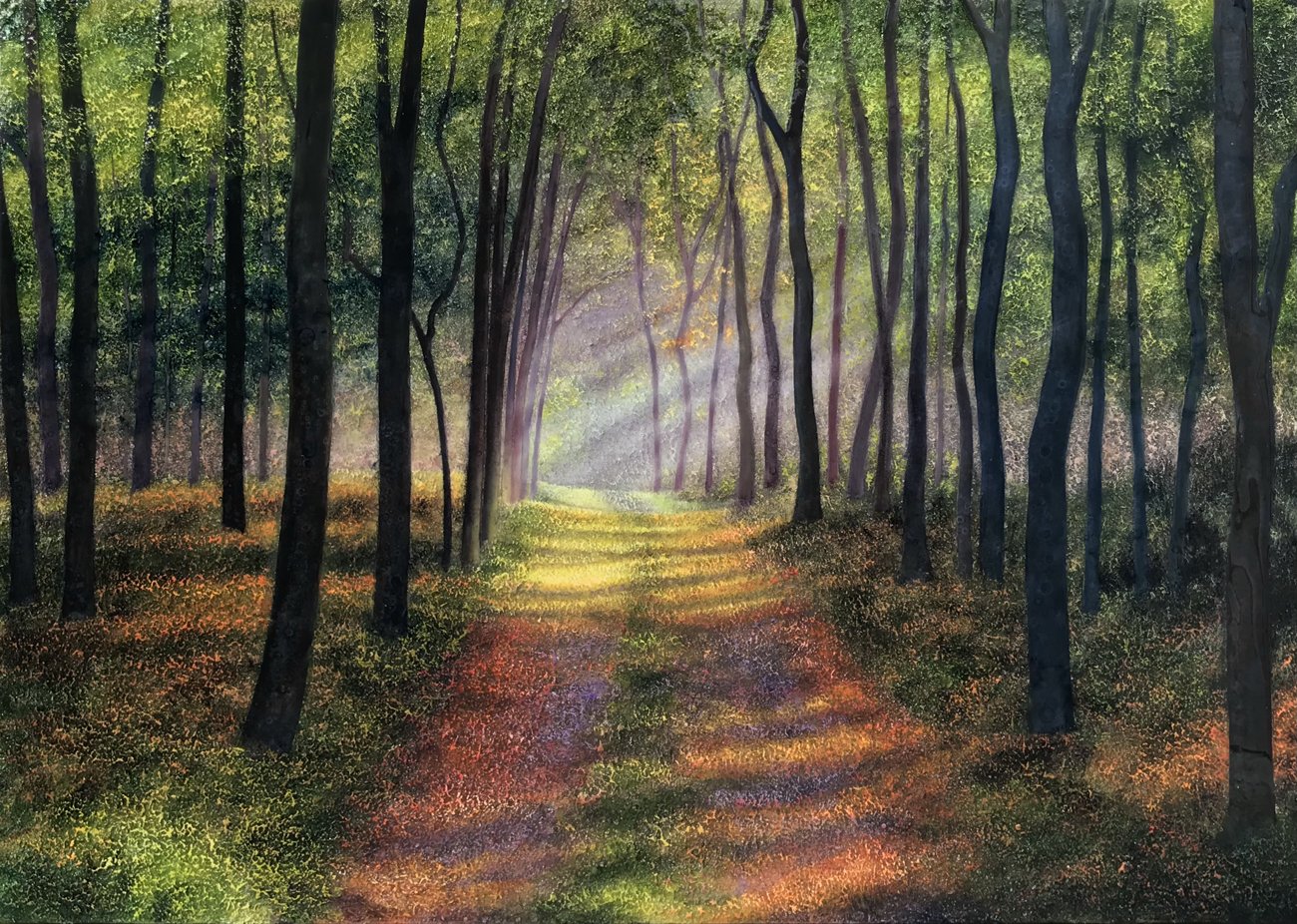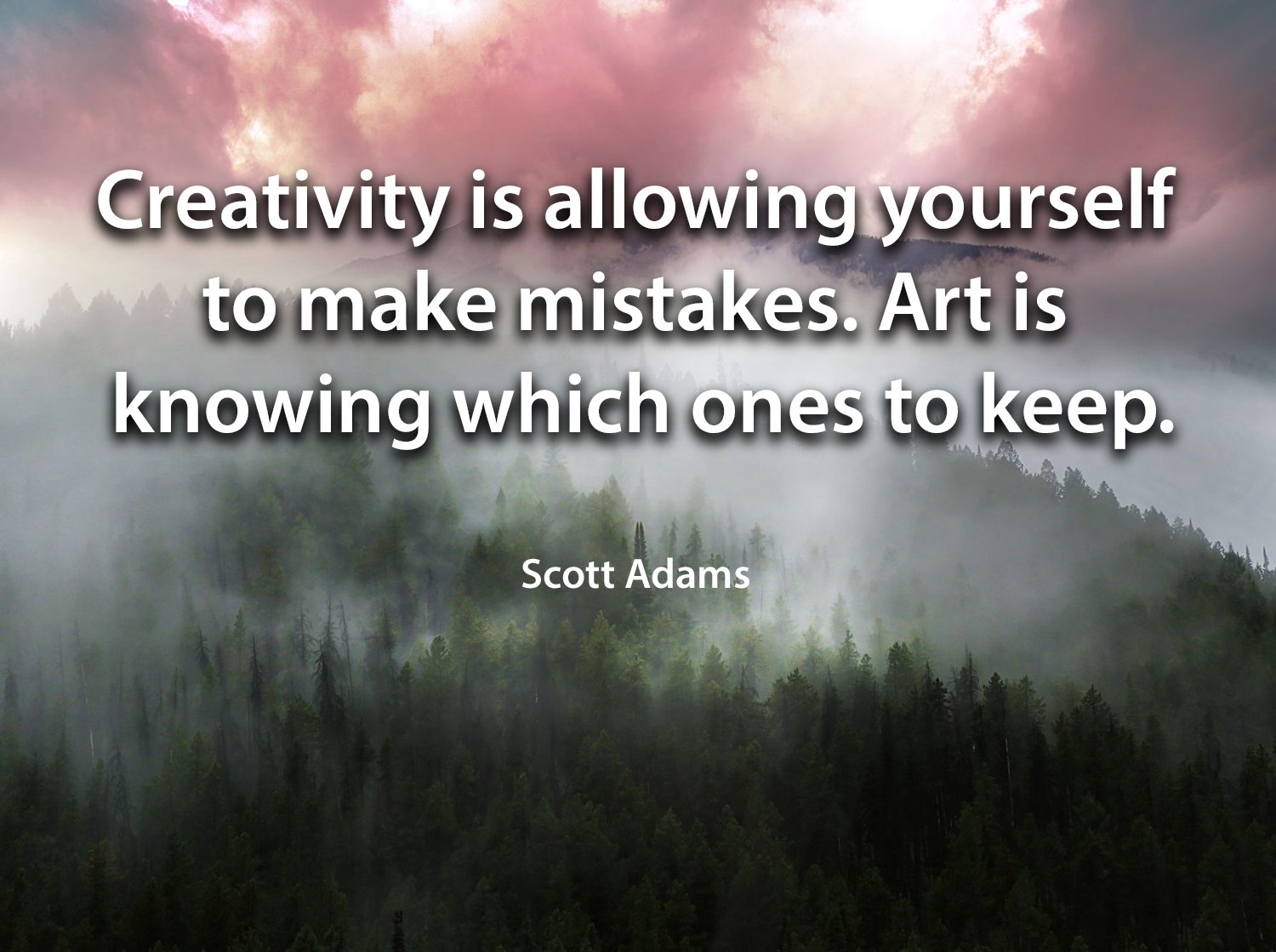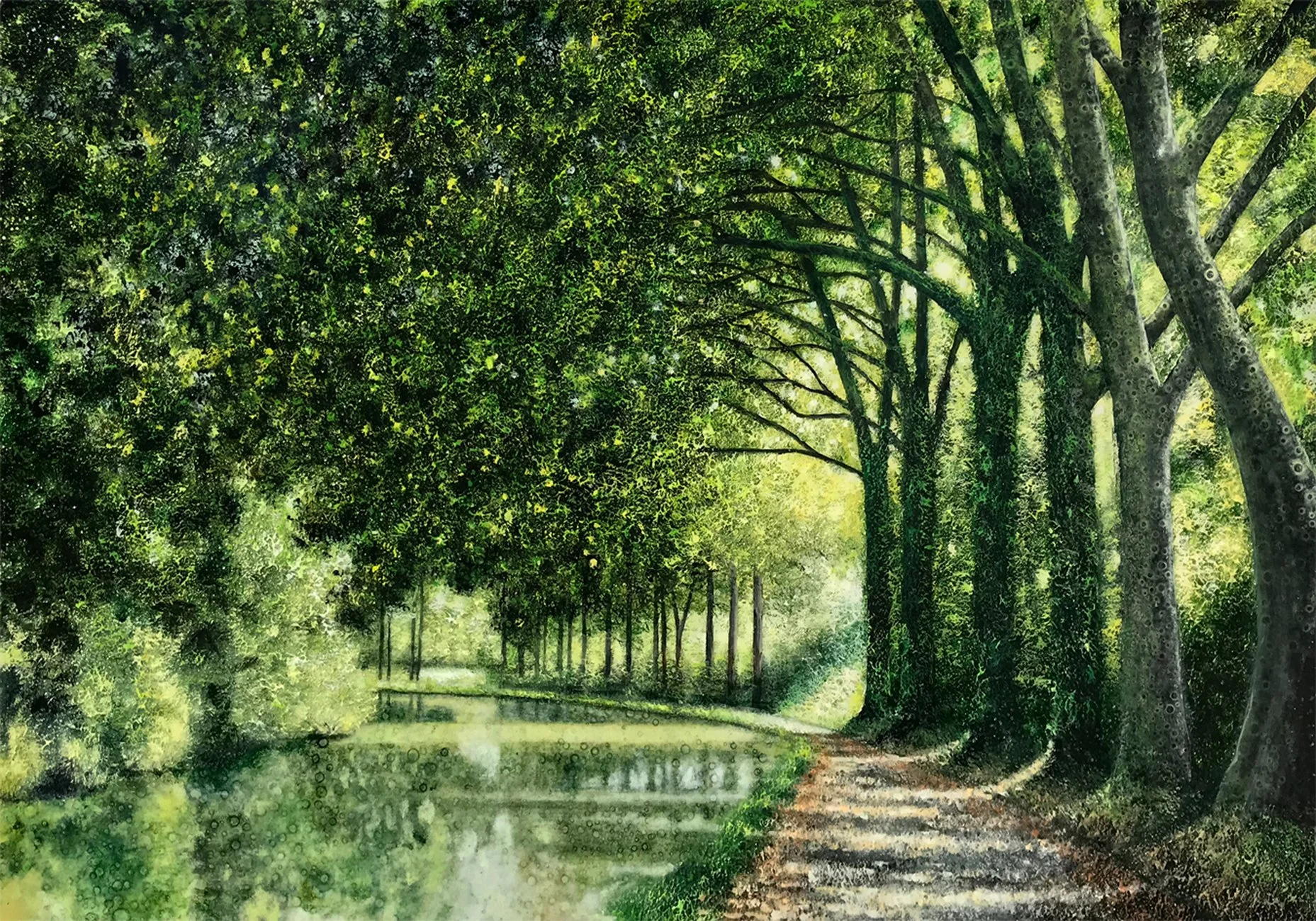When an emerging artist thinks through the question “How do I get from where I am (a novice) to where I want to be (a professional), I have suggested interviewing artists and asking pointed questions. Most artists I know would be very happy (and even honored) to be asked for their assistance. If you’re an emerging artist, please take advantage of the willingness of the artists around you to advise and encourage you. With this in mind, I have suggested that an easy place to do all this is Asheville, North Carolina simply because we have over 200 artists all working within a square mile of each other, and they have open studios, so they’re totally used to people coming into their studios and observing them work. Believe me, we answer a LOT of questions. So come to Asheville and meet as many artists as you want to meet! Pick your favorites and then…ask if you can make an appointment to ask them some questions. This is key. This is telling the artist that you respect them. That is always a good idea. So once you have that appointment, I am suggesting twelve questions that should help you gain the basic information you need to move forward. For each of the questions, I’ll explain why I’m suggesting it, and then also answer each question myself (in case that might help anyone out there).
Question #1: How long have you been an artist?
The answer to this question sort of informs the weight you should give to all the other answers. I say that just because you probably will get more pertinent information from someone who has some years behind them. This doesn’t mean that someone who has just made the transition from art as a hobby to art as a profession won’t have helpful information. That person may well have the most helpful information for you, but asking how long they’ve seen themselves as an artist just gives you a good basic idea of who you’re talking to.
Personally, I’ve been an artist since I could hold a crayon. I’ve always drawn and painted as long as I remember. I made the transition from art as a hobby to art as a career about sixteen years ago now. I inched into the career as a part time artist (painting about half the day) and working at my “real job” half time, and then when I was earning the same with my artwork as I was earning at my “real job” when I did that full time, then I quit entirely and painted full time. That felt like the smartest way to do it because…what if I quit my job and painted full time and no one bought my paintings? I had to know this would work (as best I could) so I took advantage of the fact that I could cut down to half time at my previous job. That significantly decreased the nail biting when I quit and went to painting full time.
If you have any questions related to this, please feel free to ask here. I’ll do my best to answer all the questions you might have. Thanks!













